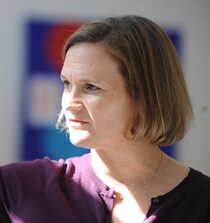She Refused To Start a Charter School Unless It Was For D.C. Kids
ByJay Mathews
“No, Dad,” she said. “That’s the year they are going to college.”
Such big plans seemed to me bound to fail. But when I checked in 2009, Schaeffler was not far from her goal. Fifty-eight of the 62 children who made it through eighth grade at what is still called the KIPP DC KEY Academy middle school had completed high school and were going to college.
By that time Schaeffler had opened many more schools. As the chief executive of KIPP DC, she now leads 20 schools with 7,300 students from preschool through high school. That is 7 percent of the D.C. public school population. Her team has established high standards for learning that have drawn strong support from D.C. families while evolving from a focus on just college to a promise to help students achieve successful careers — what KIPP calls “choice-filled lives”— by whatever paths they select.
Schaeffler has overseen the education of more than 20,000 children in two decades. She is the longest-serving regional director among KIPP’s 28 regions, 270 schools and 120,000 students. KIPP is the largest network in the country of tax-supported but privately run charter schools.
“It’s pretty simple,” Schaeffler said. “I love the work.” She and her team have deepened the recruitment and training of teachers. They have made adjustments to the teaching of children with learning disabilities and provided mental health support. KIPP students returned to classrooms last week, except for those enrolled in an online program, created by Schaeffler’s team, for up to 280 students who for now would do better learning at home.
Read the full article here.
Image credit: Jahi Chikwendiu/The Washington Post
